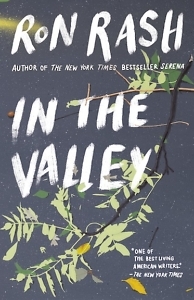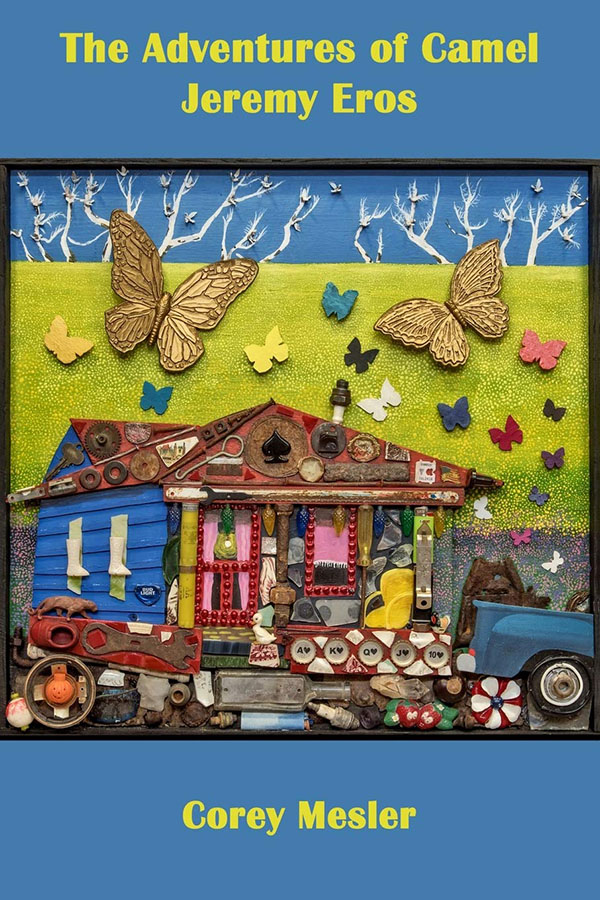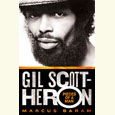Fresh Soil in Old Territory
Ron Rash’s In the Valley displays his masterful command of short fiction
Ron Rash’s new story collection, In the Valley, roams the mountains, coves, farms, and small towns of Western North Carolina — the locus of his formidable body of work. From haunting, short-form meditations on loss to a thrilling novella that revives Serena, Rash’s most indelible antihero, In the Valley offers a distillation of his storytelling mastery at its best.

Though these stories contain many of the author’s signature moves, and the subjects and motifs cover perennial Appalachian territory, Rash’s precision of craft and keen insight into character remain sharp and surprising. “Neighbors” features a familiar scene of historical fiction: a young Civil War widow threatened by looting soldiers. But Rash enters the insular logic of the woman’s dilemma, exploring the consequences of choosing one’s loyalties in a way that feels unnervingly current. “Ransom” is an eerie revenge tale about the kidnapping of a pharmaceutical executive’s daughter — pushing a familiar Appalachian subject (pill addiction’s communal toll) into a fresh plotline.
Most of the stories feature haunted protagonists who may not take bold actions themselves, but who witness or assist those actions through others. The characters are often burdened by painful choices and regrets, sometimes to a paralyzing degree, but externalized drama happens largely offstage or to other characters. These stories respect quiet fortitude, while never minimizing or sentimentalizing the price of such restraint.
Rash has a gift for implying deep grief or suffering through the smallest of gestures — a widow hesitates to burn a letter; a father hints at knowledge of his son’s violent streak; a husband asks his wife whether their grown children called that day; a sober convenience store owner refuses to stock even a single beer on his shelves.
Another Rash specialty is a tone of plaintive tenderness that imbues his prose with mystery. “L’Homme Blessé” follows an art professor who investigates murals on a condemned farmhouse’s walls. Painted by a traumatized WWII veteran, the murals may look “like something copied from a book by a talented child,” but as he “stared at them he was moved that the man felt such a deep need to express what he’d endured.” Recently widowed, the professor moves through his days clenched with grief, yet he finds himself driven to learn why the veteran recreated ancient cave paintings in the bedroom he rarely left.
 Several stories provide compelling counterpoint through protagonists who do take bold action themselves. “Flight” focuses on a park ranger named Stacy, a dead ringer for one of the dual protagonists of Rash’s 2016 novel, Above the Waterfall. Stacy’s childhood traumas led every authority figure to watch her with hypervigilance. As a result, she now refuses to give them what they want: “He wanted her to react, Stacy knew. They always had—words, tears, something.” But beneath the appearance of restraint, she is planning her next move.
Several stories provide compelling counterpoint through protagonists who do take bold action themselves. “Flight” focuses on a park ranger named Stacy, a dead ringer for one of the dual protagonists of Rash’s 2016 novel, Above the Waterfall. Stacy’s childhood traumas led every authority figure to watch her with hypervigilance. As a result, she now refuses to give them what they want: “He wanted her to react, Stacy knew. They always had—words, tears, something.” But beneath the appearance of restraint, she is planning her next move.
In “The Belt,” an elderly veteran, Jubal, owes his life to his belt buckle, which deflected a minié ball mid-battle. This defining event was double-edged: “Pure luck, his comrades called it as they’d marveled at the buckle and its indention. After Chickamauga, some touched the buckle before battle, but it seemed the luck was indeed pure, unable to be diluted and spread to others, then or afterward.” While caring for his infant great-grandson, however, Jubal recognizes glimmers of his old luck, a belief put to the test when floodwaters near his house start to rise.
In the Valley culminates with its captivating titular work — a novella sprung from Rash’s 2009 novel, Serena. The opening scene finds Serena, a logging company chief with a near-mythic reputation for ruthlessness, facing a reporter’s question about when her ambitions will be fulfilled. Her answer cuts to the heart of this novella’s dark vision: “When the world and my will are one.”
We follow Serena and her one-handed henchman Galloway as they close out Serena’s last American logging interest by exploiting the land to the hilt under a deadline that seems impossible. A fog of pervasive danger hovers over this endeavor, as expressed by a recent hire: “Quince had the uneasy feeling that he had come to a place where all manner of strange occurrences were possible, and none of them good.”
As this desperate stretch of logging escalates, gruesome deaths and injuries multiply rapidly. But that horror is only part of this story’s violence, bearing out Quince’s ominous insight that “the pale stumps made the land look poxed, as if infected by some dread disease.” Bringing this point home, Rash also includes lyrical interstitial passages that list the progression of wildlife loss that logging will bring to this valley — environmental destruction that parallels the human suffering that Serena and Galloway don’t hesitate to inflict.
With every story, In the Valley showcases Rash’s skillful attention to nuance and surprise. Through seamless prose and unforgettable images, Rash continues to cultivate ways of nurturing fresh soil in even his most familiar territory.
[This article originally appeared on August 13, 2020.]

Emily Choate is the fiction editor of Peauxdunque Review and holds an M.F.A. from Sarah Lawrence College. Her fiction and nonfiction have appeared in Mississippi Review, Shenandoah, The Florida Review, Atticus Review, Tupelo Quarterly, Bayou Magazine Online, Late Night Library, and elsewhere. She lives near Nashville, where she’s working on a novel.


